| Month | Average High Temperature | Average Low Temperature | Season |
|---|---|---|---|
| January | 10℃ (49℉) | -0℃ (32℉) | Low |
| February | 12℃ (54℉) | 2℃ (36℉) | Low |
| March | 18℃ (64℉) | 7℃ (44℉) | High |
| April | 22℃ (72℉) | 12℃ (53℉) | High |
| May | 28℃ (83℉) | 17℃ (63℉) | High |
| June | 34℃ (93℉) | 22℃ (71℉) | High |
| July | 36℃ (97℉) | 24℃ (75℉) | High |
| August | 35℃ (94℉) | 22℃ (72℉) | High |
| September | 31℃ (88℉) | 18℃ (65℉) | Low |
| October | 24℃ (76℉) | 13℃ (54℉) | Low |
| November | 15℃ (59℉) | 5℃ (42℉) | Low |
| December | 11℃ (52℉) | 2℃ (35℉) | Low |
Iran’s Isfahan province’s capital, Isfahan (Sepahan), has a land area of 250 square kilometers and is located in the middle of a plateau. Isfahan is located in the middle of Iran geographically, and it has traditionally been a very ideal area to live in due to its pleasant temperature, fertile land, and enough water supply from the Zayanderud River. We’ll start talking about Isfahan’s history and finish it with the information given about the best time to visit Isfahan.
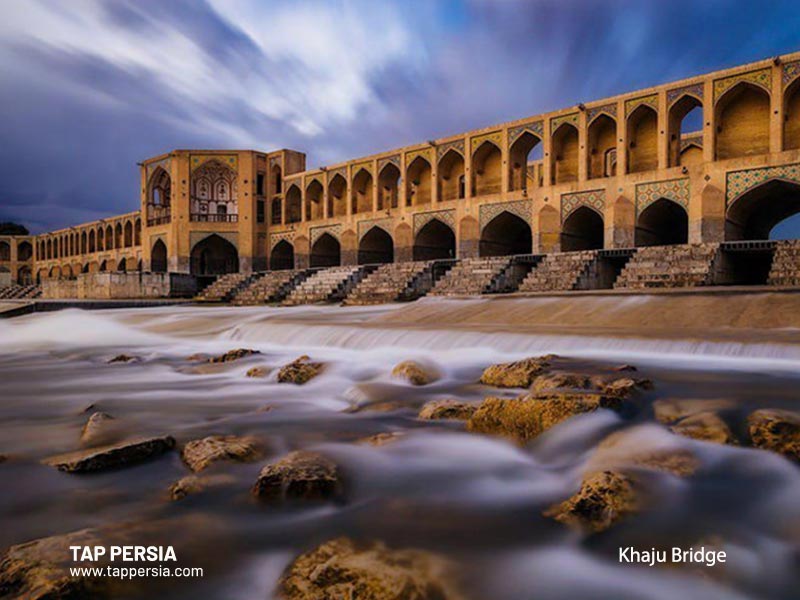
History of Isfahan
Isfahan was formerly known as Ispahan because a people group known as the Sepahian dwelt in the rich plains close to a city during the Sasanian era, and they founded a city and gave it their name. Isfahan was taken over by the Islamic Army in 19 AH without a battle or any bloodshed, but rather by agreeing to a peaceful settlement, which added this area to the many others that were taken over by the Islamic army.
This city was ruled by several rulers over the course of three hundred centuries, and in the fourth century AD, the Ziyarid and Buyid dynasties picked it to be their country’s capital. During the Seljuq Dynasty in the fifth century, the capital of this kingdom expanded from the Seyhoun River up to the Eastern Shores of the Mediterranean.
The Timurid Army mercilessly looted and massacred the inhabitants of Isfahan in 789 AD.
Isfahan rose to prominence as a hub of trade, culture, and industry in the 10th century during the Safavid Period. Shah Abbas’ kingdom shifted its headquarters from Qazvin to Isfahan at the start of the 11th century, in 1006 AH, and this city served as the Safavid dynasty’s seat of government for around one and a half centuries. Isfahan is famous for this reason.
What is Isfahan Known for?
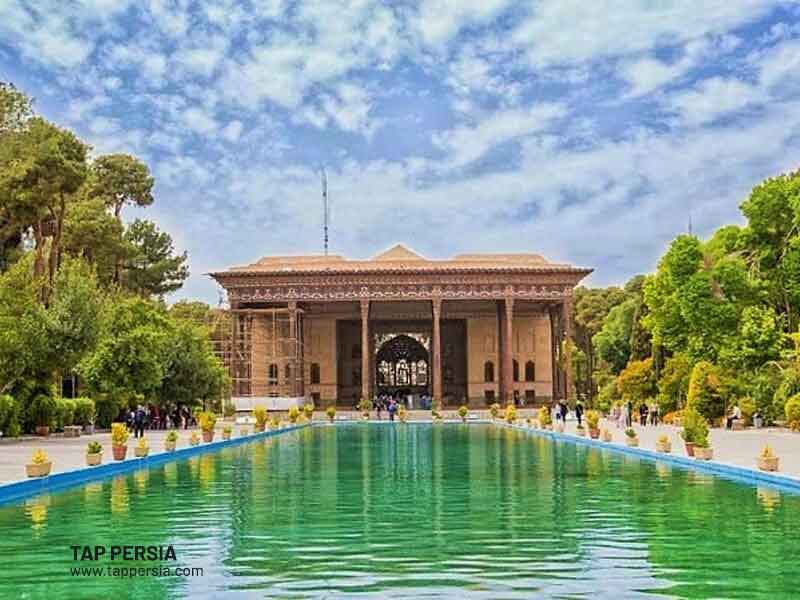
Isfahan has gone under several names over the years. Asef Han, Apadana, Esbahan, Aspedan, Espatna, Espahan, and several more names are among other names of this city. Additionally, this city was referred to as Sepahan by Ferdowsi, a well-known Persian poet, who wrote the poetry collection Shahnameh.
In 2005, Isfahan was selected as the first cultural hub of the Islamic world. Numerous travelers from Islamic nations as well as many others from other regions of the world have visited this city. Isfahan is also known for its cashmere, inlay, and etch crafts. If you are searching for excellent Persian souvenirs, now is the best time to visit Isfahan and purchase them at the historical Isfahan bazaar or around the famous Naqsh-e Jahan Square.
Isfahan is referred to as the turquoise jewel of the globe, the haft of the world, and the cultural center of the Muslim world. Iran’s capital, Isfahan, is a historic city. It ranks as the third most crowded city in the nation. Isfahan is Iran’s second-most popular tourist destination after Mashhad and its second-most important industrial hub after Tehran.
Isfahan has a temperate, chilly spring and autumn, a scorching summer, and a freezing winter. So check the best time to visit Isfahan before traveling to this city. The city prospered between 1050 and 1722 B.C., notably during the sixteenth century when Isfahan served as Iran’s capital twice.
Where to stay in Isfahan?
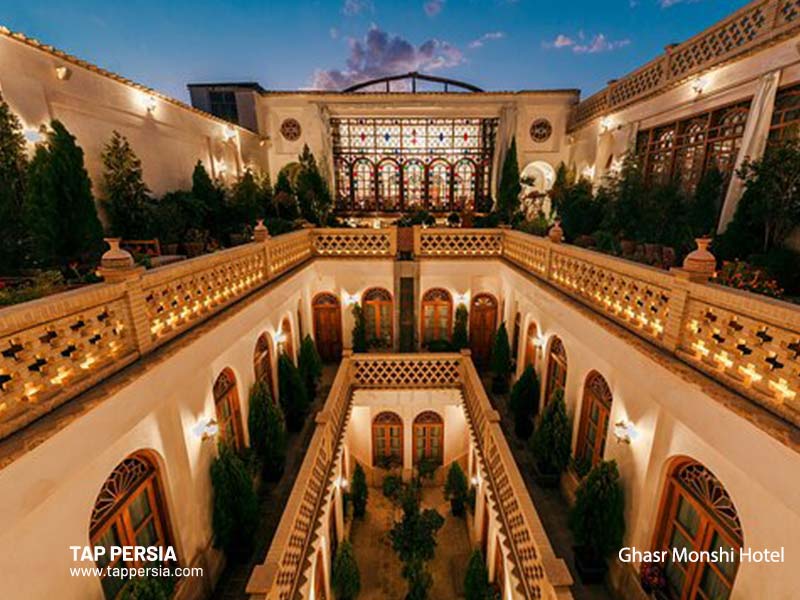
Isfahan is a tourist destination, as was already said, and it boasts a large number of high-quality, reasonably priced classic and modern hotels. The top luxury hotels in Isfahan with the greatest amenities are Abbasi, Kowsar, Piroozy, and Aseman. Three-star hotels with decent amenities at reasonable prices can be found in Isfahan in Zohreh, Part, Setareh, and Mahan.
The Azadi Hotel is the most affordable option, making it a wonderful alternative for individuals who like to travel on a budget. The greatest historical hotels in the city are Atigh, Isfahan, and Toloo Khorshid. Espadana, Parsiansuit, Chehel Panjareh, Jaam Firouzeh, Partikan, Ibne Sina, Negin jey, Kaveh, Melal, Hooman, Safir, Ali-Qapu, Yaqoot, Darvish, and Jamshid are just a few of the other lodging options in Isfahan.
What to eat? Where to eat?
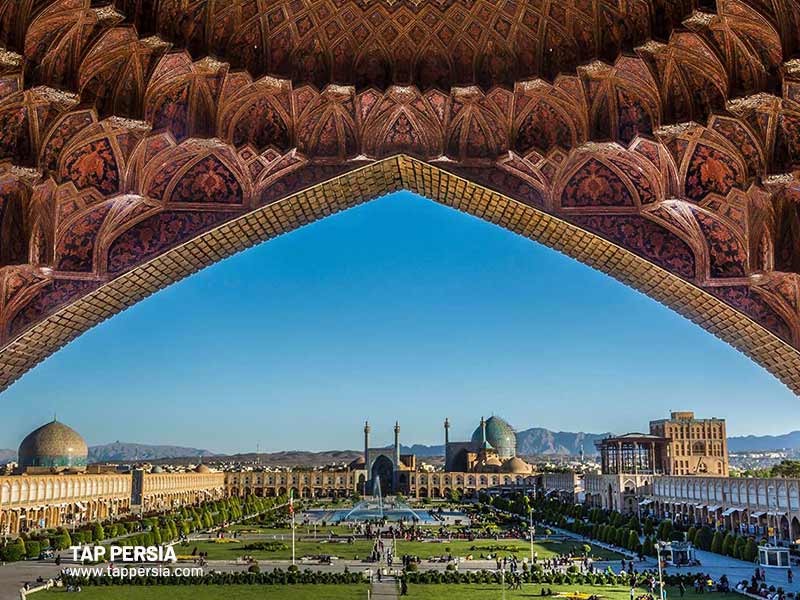
Like other Iranian cities, Isfahan has its unique regional cuisine, including Khoresh-e Mast, Biryani, and Kabab. Other traditional delicacies from Isfahan include Kaleh-josh, Ash-e Somaq, Kaleh-gonjeshki, Mungbeen and Zardak, Baqali Zorat, Ash-e Mash and Ghomri, Koko qandi, Gheymeh rize, Yakhneh torsh, Vinegar and Beetroot Omaj, and more.
You may taste these meals in Khan Gostar restaurant in the city center There are several additional good restaurants in Isfahan that have consistently attracted international visitors, including Shab Neshin, Jam Neshin, and Zagros. We advise you to visit the city’s Khansalar and Ashti traditional eateries if you wish to experience a tranquil traditional setting.
For people who are interested in quick cuisine, Hermes and Faramarz eateries may be suitable options. Numerous additional excellent dining establishments can be found in Isfahan, including Zhik, Nan Doost, Tarazjoje, Arakhan, Partak, Silverspoon, Zayandehrood, Veniz, Bros, Aseman, Domino, Newsha, Bastani, Patineh, Shad Beryani, Hakim, and Shandiz.
Beverages (Soft Drinks)
Gosh-e Fil, which is typically consumed with local doogh, is one of Isfahan’s most well-known regional dishes. You may sample it in “Chahe Haj Mirza,” one of Isfahan’s oldest cafes that dates back to the Safavid era. Summer is the best time to visit Isfahan to try Rahnan ice cream which won first place in the ice cream festival of Switzerland. Because it is made with fresh milk, Rahnan’s Ice Cream is well-known across the world. Fun Glas, Roozegar juice bar, Time, Firouz Sharbat house, Radio, Ahang, Amordad, Moon, Toranj, Q, Jazzveh, Banu, and Blanche cafes are just a few of the awesome cafes in Isfahan.
What do we buy from Isfahan?

It is quite attractive to purchase souvenirs from Isfahan. The greatest kind of Gaz, one of Isfahan’s classic pastries, can be purchased at the Kermani Gaz shop on Abdolrazagh Street. Another two of Isfahan’s well-known pastries is poolaki. In Isfahan, handicraft bazaars such as the Qeysarie Bazaar, Grand Bazaar of Isfahan, and Naqsh-e Jahan Bazaar are where you can get a variety of bent wood, calico tablecloths and dishes, and Khatam dishes. The Kowsar Trade Center, Park Mall, and Isfahan’s city center are all wonderful options if you enjoy visiting contemporary retail malls.
Health and Care
Saadi, Al-Zahra, Sina, Sadooghi, Kashani, Noor, Khorshid, Farabi, Askarieh, Feiz, and Shahid Beheshti are just a few of the excellent hospitals in Isfahan, which are well-equipped to offer therapeutic services. Along with this, the city is home to a number of high-quality drugstores, including Hilal Ahmar, Shahriari, Mazaheri, Mansoori, Jafarian, Edalat, Abbasi, Emdad, Khakpoor, and Mostaghasi.
Isfahan touristic attractions
The majority of Isfahan’s historical sites are located close to the Zayanderud River and date back to the Safavid Period.
There are many tourist attractions and historical sites in Isfahan, including Ali Qapu, Sheikh Lotfollah Mosque, Shah (Imam) Mosque, Menar Jonban, Vank CathedralHasht Behesht Palace, the Four gardens, Fire temple, Allahverdi Khan bridge, Isfahan’s Historical Bazaar, Takht-e Foulad Old Cemetery, Chehel Sotoun (forty columns), Naqsh Here is further information about a few of these attractions.
Qeysarieh Bazaar
During the Safavid era, this bazaar served as a marketplace for the most expensive goods and representatives of foreign companies that had shops there in the past. One of the largest bazaars in the world, this one is divided into many sections where various goods are offered for sale. For instance, there are divisions for shoes, carpet, gold, jewelry, and silver. It takes a lot of time to go around this market.
Menar Jonban
One of Iran’s most well-known historical landmarks, Menar Jonban, is located on the route between Isfahan and Najaf Abad, 5 kilometers to the west of Isfahan. This structure has two minarets and one porch.
This monument contains the burial of Abdollah Ibn Mohammad Ibn Mahmoud, a well-known figure from the eighth century. The Ilkhanate dynasty’s rule coincided with the construction of this monument. Because of its design, this monument has great architectural value.
Hasht Behesht (Eight Paradises) Palace
The Hasht Behesht Palace, which is situated in the middle of a park, is part of the Dowlatkhaneh complex of the Safavid Era, which was built in the 11th century AH under Suleiman I’s rule. There are entrances to this palace on either side of the garden.
Vank Cathedral and Museum

A group of Armenians from modern-day Armenia migrated to Isfahan in the 11th century and settled in a hamlet to the southwest of the city. They gave the settlement the name Jolfa. To safeguard the Armenian minority in that village, Safavid monarchs commanded religious freedom.
Seyyed Mosque
The largest and most well-known mosque from the 13th century is Seyyed. One of the finest academics who lived during the reign of Mohammad Shah Qajar designed the mosque.
Hakim Mosque
One of Iran’s most beautiful mosques is Hakim Mosque. It was constructed between 1051 and 1073 AH, under the rule of Shah Safi and Shah Abbas II, and contains four porches.
Isfahan’s Ali Qapu Mansion
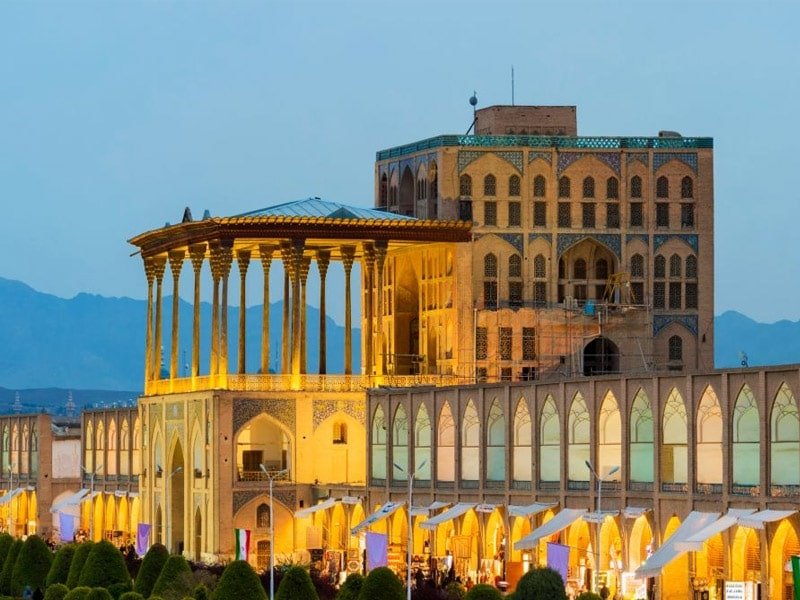
The six-story Ali Qapu Mansion was constructed in the 11th century AH. Each floor is uniquely designed and artistic. The third-floor porch, the copper pool, and the reception hall with its exquisite paintings and moldings are the remarkable features of this estate.
Si-o-Seh Pol (Thirty-three Bridges)
Isfahan grew throughout the South after being chosen as the Safavid Empire’s capital. Chaharbagh (Four Gardens) Street, which ran for about six kilometers south of Dowlat Gate and was a significant urbanization area during the period.
Khaju Bridge
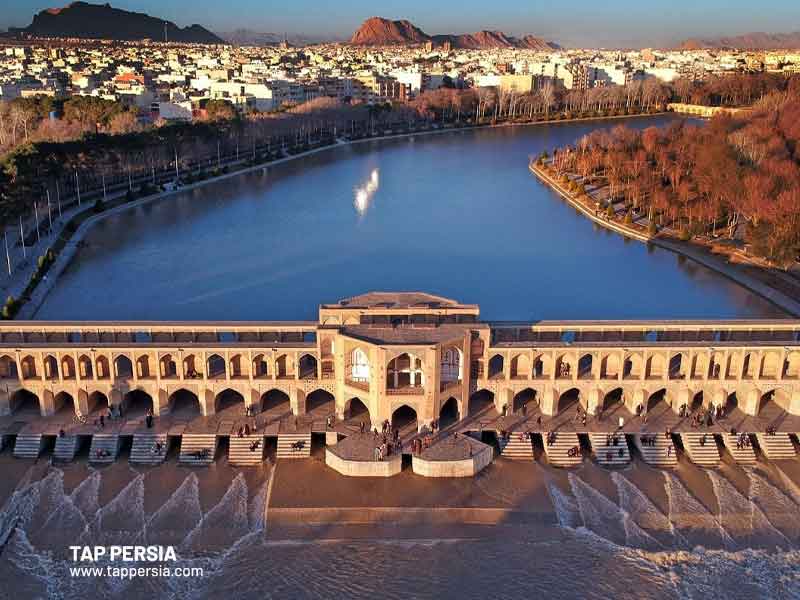
There are monuments from the Safavid era during Shah Abbas II’s rule in 1060 AH on the east bank of the Zayanderud River and Khaju Bridge. This bridge served several purposes.
Sheikh Lotfollah Mosque
Another mosque may be seen on Imam (Naqsh-e Jahan) Square’s eastern side. Shah Abbas I, a Safavid Dynasty ruler, oversaw the construction of this mosque. The square and the buildings surrounding it were built in the same period.
What is the best time to visit Isfahan ?

The best time to visit Isfahan is in April or May, according to a variety of factors, including the weather, cost of travel and lodging, busy travel times, and much more.
Isfahan experiences warm, semi-arid weather with yearly average temperatures of approximately 16°C and rainfall totals of about 13 mm. The Zayanderud River has aided the city’s agriculture in spite of Isfahan’s typically low water content.
Typically, the highest July temperature is around 39°C (102°F). In the chilly months, like January, the lowest temperature is often -0°C (32°F).
If you want to see the city’s attractions during the day when the sun is up for the longest period of time, August is the best month to go. Do you really want to be drenched while on vacation? Isfahan in May is best avoided if you want to avoid the rain. If you want to enhance your chances of avoiding rain, September is the best time to visit Isfahan(seasons in Iran).
Is Isfahan Worth Visiting?
This was a guide to this city and information about the best time to visit Isfahan. Without a doubt, Isfahan is a wonderfully magnificent city. The city is referred to be “half of the world” in Iranian culture because of its exquisite Islamic architecture, broad boulevards, covered bridges, palaces, mosques, and distinctive minarets. There are wonderful and distinctive foods to savor, as well as desserts.




Comment (0)